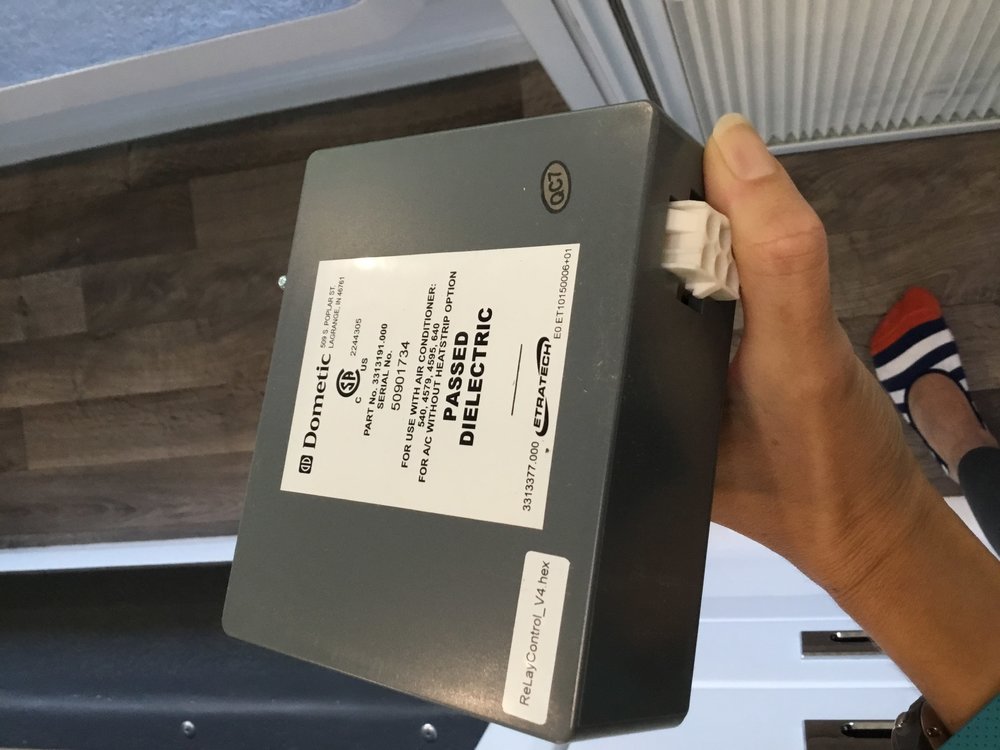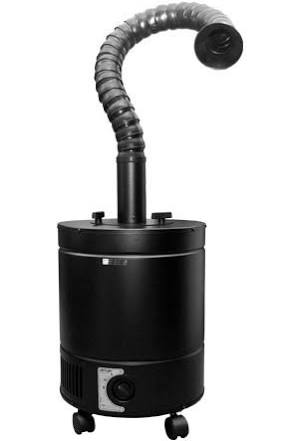
MountainApple
Members-
Posts
28 -
Joined
-
Last visited
-
Days Won
1
MountainApple last won the day on December 3 2017
MountainApple had the most liked content!
My Info
-
Gender or Couple
Couple
My RV or Travel Trailer
-
Do you own an Oliver Travel Trailer, other travel trailer or none?
I don't own a RV or Travel Trailer
-
Hull #
267
-
Year
2017
-
Model
Legacy Elite II
-
Floor Plan
Twin Bed Floor Plan
Recent Profile Visitors
The recent visitors block is disabled and is not being shown to other users.
MountainApple's Achievements
Newbie (1/14)
0
Reputation
-
KarenLukens started following MountainApple
-
dharmardr started following MountainApple
-
I wonder if this (putting mineral oil down the drains) would also help keep odors from coming up when the p traps dry out when a trailer is stored. What do y’all think? Ours sat for a few weeks in summer after hauling, the p traps dried out, and wow what an odor came up into the cabin from the empty grey tank. It cleared out, and generally we are using happy camper to good result, keeping the grey water smelling fine. But there’s got to be residue in the tank itself when it’s “empty”. Like you we have a composting toilet and have thought about repurposing our never used black tank. Though I am certainly now going to open the black valve and see if anything drains out! Sorry if this is a dumb question John, but you mentioned mineral oil in all 3 tanks...how would you get oil into your fresh tank? Would you pump it in in via the boondocking configuration or use your self built inline hose bleach dispenser? Can one safely run oil through a water pump?
-
Where’s the AC control box?
MountainApple replied to MountainApple's topic in Mechanical & Technical Tips
Thanks Bill! Right you were. There is no control box. No wonder I couldn’t find it. Sorry to take a while to reply- I moved residences, and we all know how that goes. -
quickie-anyone know where the ac control box is? Would look like this (see photo). I have a dometic led thermostat that’s not receiving voltage. The control box doesn’t seem to be in the ac unit.
-
Back to Johns idea regarding dust infiltration. If I understand correctly you primarily want your mod to function while towing. It does sound like that oxide desert dust is a thing to be respected. If you’re already giving up cabin space to an air filter anyway, as I am, what about hooking up an air filtration system to the maxx fan in the cabin, set on intake, to create positive pressure in the cabin? I guess this would be a stationary rather than mobile solution. But some of the consumer hepa filter companies like IQ air and Allerair offer either intake hoods (for nail salons and industrial work) or intake vents. I’d imagine some of the grower products like can fan could also be ducted. One of these could be attached to the opening of the maxx fan on the ceiling. Essentially you’d be filtering your intake air and creating positive pressure, which might prevent dust intrusion. I can’t remember the specs but I wonder if they could be run off of solar.
-
Hi John. I want to get to your mod suggestion, but also stop to discuss a fine point for a second. I wouldn’t say I expected a “medically clean” unit from Oliver. I expected that they would provide a “normally” clean product to the standard that they advertise and that we agreed upon pre-sale. As we now really investigate we find drill shavings everywhere-these did not come from road vibration, and clearly show that they did not clean between all stages of assembly and manufacture as they say that they do. I expect this sort of thing these days, which is why my work order was accompanied by a list written up by the office of special requirements, including special attention to he regular cleaning (I’ll explain the rest below). While I am not so concerned about drill shavings I am concerned about inhalable Fiberglas dust, which is a possible carcinogen per California, and absolutely a respiratory irritant. If anyone is wondering why buy a Fiberglas trailer if you’re concerned about the safety of the material, many materials are safe by one exposure method but not another. Intact Fiberglas is a non concern, while powdered inhalable fiberglas is another story. As I mentioned above, in my case, and I think you’ll be seeing an increasing number of people like me in the forums as there is a whole movement of people with environmental illnesses using RVs, the whole premise of the transaction with Oliver was based, from initial inquiry to finish, around the understanding that they were customizing my unit in light of special needs. Meaning they agreed to take some reasonable measures within the scope of their capabilities that were agreed upon before the order was placed. All of the following were negotiated in relationship to medical needs: the specs on the cushions and flooring, the between stage cleaning and chemicals allowed for cleaning, who was allowed to enter the finished unit after production (no one), and how it was to be parked to allow offgassing. I’ll give props to anyone who has a theory on how such significant quantities of dust could get into the cold air lines. The rest of the contamination seems likely to have come from being run in a dusty location in the factory or on the trailer when the interior must have looked like a flour mill- the cabin interior would have had to be filthy before the AC was first turned on. Further my local AC technician was perplexed- the AC unit should have actually cleared out the dust inside the casing while it was first run for 2 days by me, but we still find all this residue. The intake filter did not have any residue in it, so it didn’t come from the cabin air after delivery. So whether I have a medical problem or not I think is actually not relevant to the Oliver side of the problem. They poorly installed a very expensive appliance, resulting in an air unit that blows an air irritant, and they’re not getting behind fixing the problem. Which turns out is very extensive because bad installation of the AC requires work on the furnace and the ducting.
-
There are great minds here! I really appreciate all the suggestions. Raspy, I have a question about your idea to heat the bathroom via the two main cabin vents by leaving the door open. I agree that for bathroom cabin temperature, this might be more effective than using the bathroom ducted vent with the door closed. However what about protecting the water system between the hulls from low temperatures? Do you think this would be viable for using the fresh water tank in winter? My understanding is that the passive heat loss from the ducts in the hull is what protects the water lines, valves, and tanks. Your idea about cutting a hole between the bathroom and dinette wall is an interesting one.
-
Hi folks, We are having to figure out how to replace our flex ducting from the furnace to the bathroom (looks like 4” dryer vent hose, steps down to 3” for the run to bathroom). The ducts in the cabin are easy to access, but it turns out Oliver engineered this so that the bathroom ducting is not accessible between the refrigerator and the bathroom vanity. Worse, it makes a 90 degree left turn and angles down slightly to get into the bathroom before it turns up again to get to the bathroom vent. Because the hose is fragile, it probably can’t be forced through this turn, nor cleaned in place. Does anyone have any ideas for us? While I am generally pissed that this is built not to be serviceable, we need a solution. We’ve thought of -running smaller 2-3” ducting inside the existing ducting and trying to get it around the corner with string, wire, and a vacuum. This would make the bathroom colder than it already is. -running a different type of hose or duct in replacement that might survive the turns better-but what? -taking out the shower pan and drilling a hole in the inner Fiberglas hull to improve access to turning the hose around that corner (apparently this hole is standard in 2018 models, but we don’t have one on our 2017) -drilling two new holes, one in the closet floor and bathroom wall changing, and having the ducting exposed in the closet. If you’re asking why this crazy project, we got our unit from the factory in be winter. Not until I started running AC in spring and started coughing and sneezing like crazy did we realize that the AC is full of Fiberglas dust, in places and amounts that could not have come from running the AC for 2-3 days. We dumped several teaspoons of this dust out of the cold air lines (see what looks like solid white in the clear tubes in photos) . Dometic thinks it was an original factory installation problem. While obviously there is always going to be some settled Fiberglas dust between the hulls, recirculating large amounts of Fiberglas dust through the cabin air in a basically filterless system isn’t going to work for my medical condition. After pulling out the cabinets and the bathroom vanity yesterday I’m not even sure they really cleaned my trailer between production stages like they say, because there are significant piles of dust in several places. Since the propane heat has also been run since the AC was run, that whole system also has to be cleaned. We pulled out the Atwood furnace and hoses and yes there is Fiberglas dust in there too. That’s how we get to this question. I actually bought this unit to have a refuge of controllable clean air quality for medical reasons. While Jason as always is being extremely kind and helpful, the company doesn’t seem to appreciate this is a major issue, and so far has only been willing to pay to have someone blow out the AC. Unfortunately, this kind of AC really can’t be cleaned thoroughly for particles, and it also can’t be filtered (I don’t consider the pantyhose on the intake to be a filter). The problem started with unwillingness to replace the AC and now I’m looking at even more downwstream problems in the furnace and the built in uncleanable ducts. I’ve got two industrial hygienists, a doctor, a handyman, and a Dometic installer involved and I don’t see a good resolution on the horizon where I end up with a trailer that looks like what I should have left the factory with.
-
Here's what I've been noticing since I added fresh water to my trailer, started monitoring temperatures, and was running the cabin between 66F and 78 with exterior temperatures ranging from 7 to the 40s. Yes 78 is high-I've learned that my thermostat is set higher than the actual temperature. Anyway I n short I'm no longer worried about freezing. It seems like the water tanks really do help retain heat between the hulls. I am worried about humidity. Humidity is pretty well controlled in the cabin and the curb side bed hatches by the combination of the furnace and my dehumidifier, but the street side and basement humidity are not good. I haven't measured any other spots inside the hull but I'd expect them to be as humid or worse because of distance from the furnace. I'm working against high exterior humidity, and the furnace alone just doesn't dry out the street side. I also don't think the heat from the dehumidifier is causing the furnace to run significantly less (this was a theory above). I wonder again about installing either a crawl space dehumidifier between the hulls or a fan to try to help even out the temperature and humidity differences. I think the fan shouldn't be on the outside hull for humidity purposes, as suggested above for temperature control, but I don't know where either would be best placed. Measurements: -the fresh tank, measured from the curb side hatch, is usually around 9 degrees cooler than the cabin, and slightly more humid. The lowest temperature it's registered so far is 58. -the grey tank, measured from the street side hatch, is about 17 degrees cooler than the cabin, and more humid day still. The lowest grey tank temperature so far has been 48. But it is regularly over 50% relative humidity, and in that temperature range above 40 where mold grows slowly. -the basement is the most humid, close to outdoors in humidity, and about 22 degrees cooler than the cabin. This often approaches 60% relative humidity. Julia
-
Hi Sherry, I read this at the time but was too swamped to reply. I appreciated your replying with ideas and experience with products. We ended up choosing the upgrade Terkett Fiberfloor in grey oak. After weeks of back and forth and actually being told otherwise, it was finally revealed that the Terkett brand styles (the seagrass, grey oak, and flagstone) are Fiberfloor, which is lower vocs than Terkett's regular vinyl. It's considered one of the best Flooring products options out there for people with MCS. I would have picked it straight away at the start if I'd known it was actually offered, and not spent time trying to reinvent the wheel. Kudos to Oliver for offering such a healthy flooring option..but please advertise/list what it is so people can choose it! It's got a great warranty too. They did make it right with us, not charging us for the service for installing it after our camper had left the production line since we were given misinformation. Marmoleum would be so pretty if they figured out the technical side of getting it adhered, and people who wanted natural flooring would probably be excited about it. We will probably get some rugs too for comfort eventually. Julia
-
We are in Massachusetts, Julia and Avi! Hi Grayson! You showed me and my friend Will your camper! And I bought one. We liked your green and grey pinstripe color combo and used that btw. Julia
-
Wowee, well that's encouraging to hear, water in the tanks down to 10 and haven't used a heated RV hose. I went to my local RV supply right after delivery to get a longer hose for filling the tanks and they scared the pants off me once they sussed out that I was planning to dewinterize and full time through the winter, rattling off a bunch of brands they'd seen freeze up here. They told me to buy a new camper or move south, and another service department down the road told me the same. Neither had heard of Oliver but were not impressed by the idea of an enclosed double hull with reflectix and passive hull heat. I cried in the parking lot. Thus I started taking bucket showers and tracking temps with little freestanding hygrometers. I really need a digital monitoring system to be able to answer a question like time of day and outside air temp. I'm going to run things as is for a week or so with that and see what I find, without dehumidifier and with. In general last month we had nightly lows of 16-38, and highs of 32-58. RH is HIGH in my spot here in MA-rivers, farms, in a valley.













